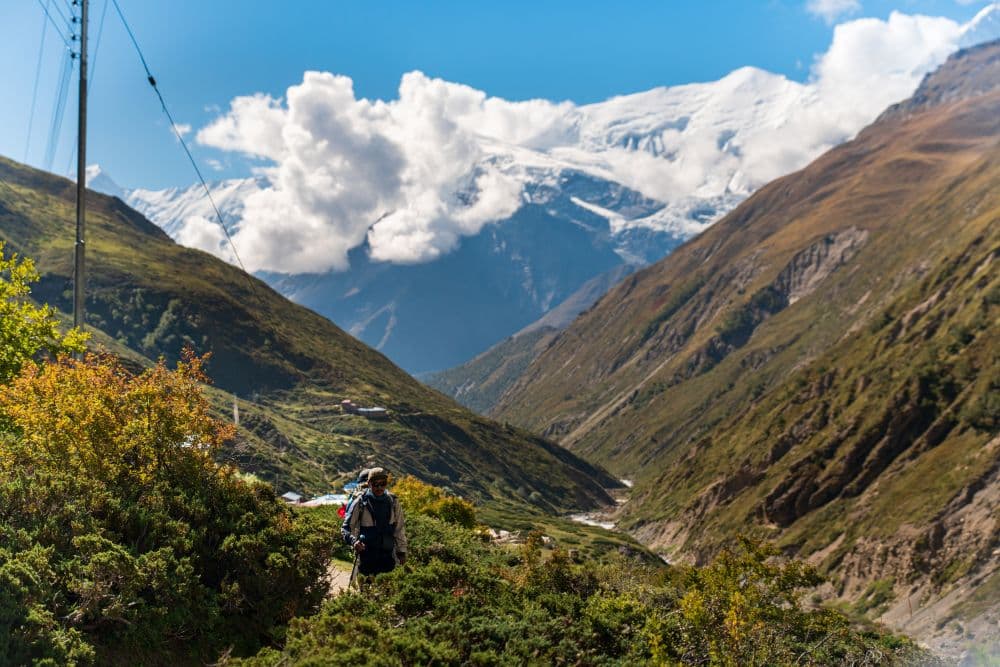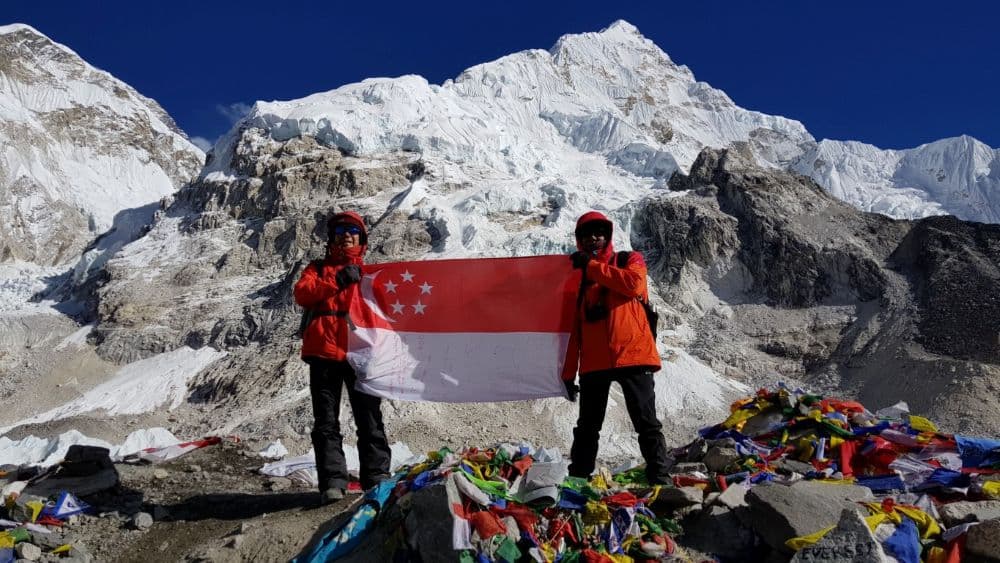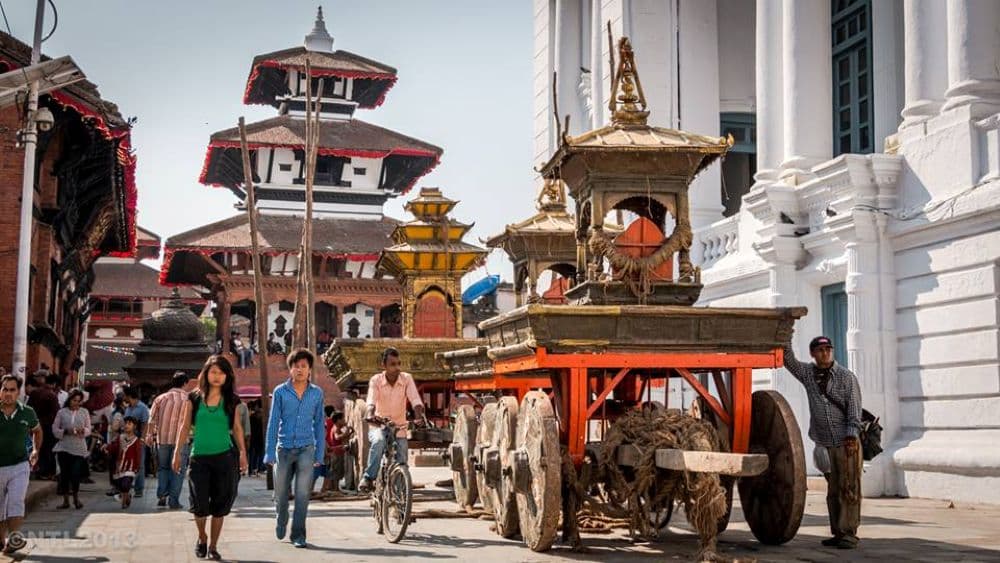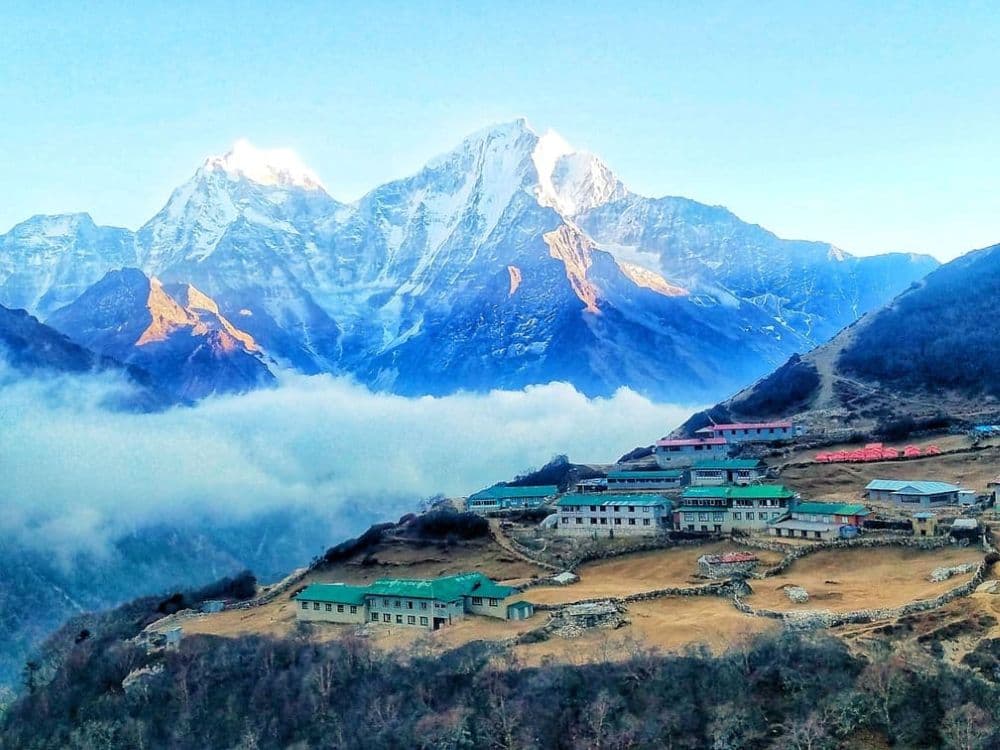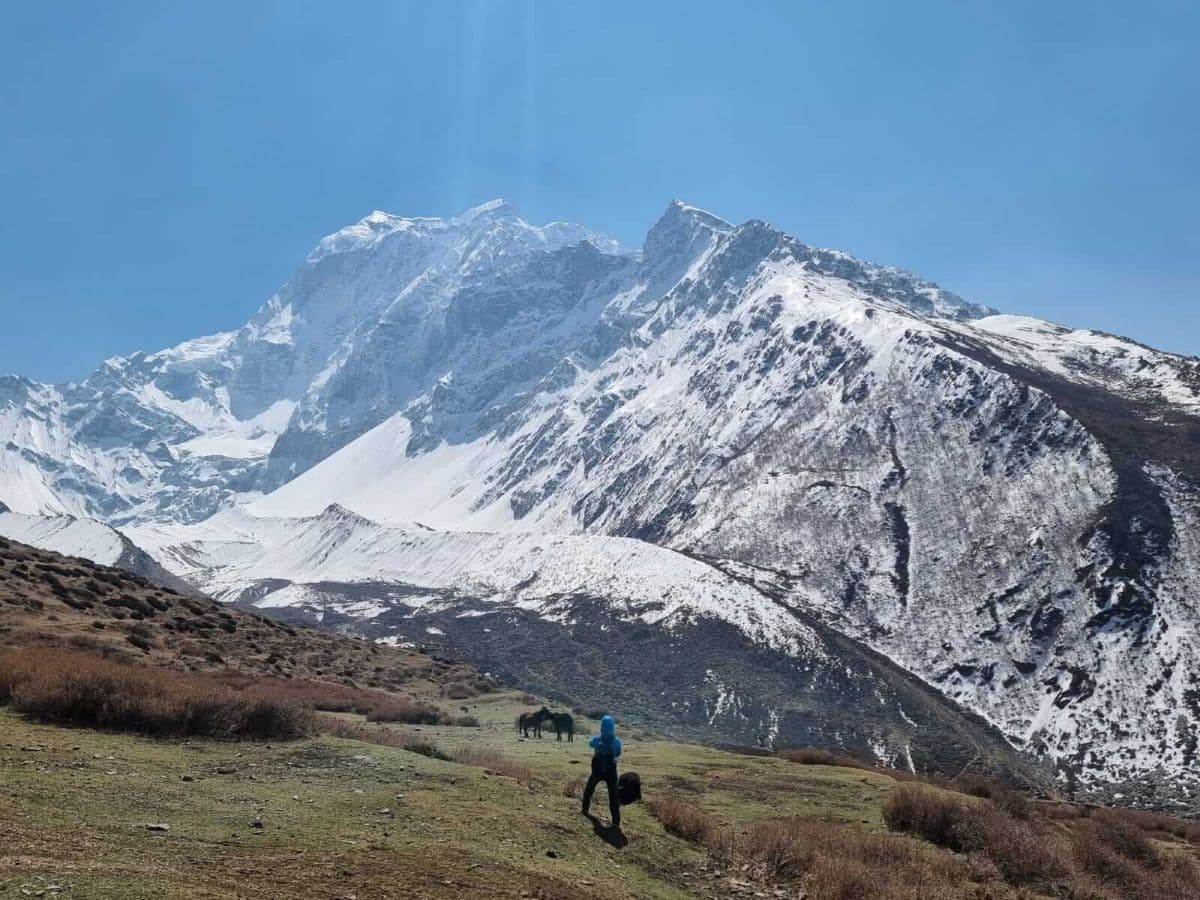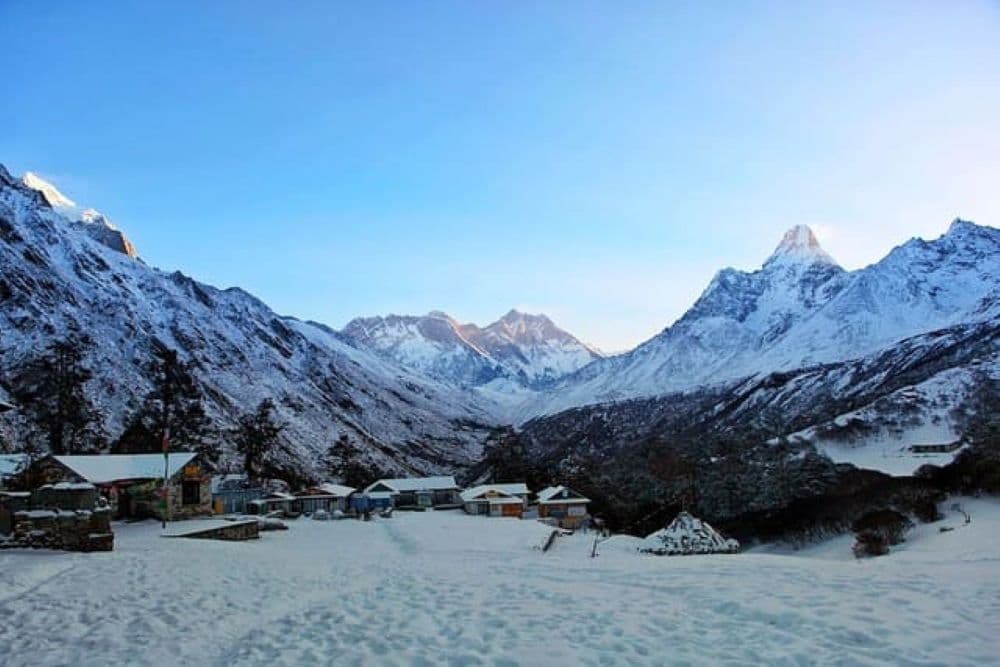
Is the Everest Base Camp Trek in Winter Possible?
Everest Base Camp Trek in winter can be as unique and rewarding as it gets. You may wonder how. The allure of mountains changes with the change in seasons. With winter, the Everest region turns itself into a winter wonderland, covered with white cotton snow. The mountain peaks, including Mount Everest, covered with snow, become more prominent under the blue sky. When you are walking on the icy trail, your cheeks will turn red with frigid temperatures, but you will enjoy the feeling as you are surrounded by Himalayan vistas.
So, if you ever find yourself pondering about the possibility of a winter EBC Trek, then it is absolutely possible. Through the proper preparation, the right gears and equipment, and the correct planning, adventurous trekkers like you can safely enjoy the vastness of the Himalayas in a more serene and quiet surroundings.
Why Everest Base Camp Trek in Winter?
There are many perks of trekking in Nepal during winter. Winter Everest Base Camp trekking offers a unique experience that combines adventure with tranquility.
1. Crips Mountain Views
The EBC trek has some of the best mountain views in the winter season. Many people think that winter trekking is not rewarding. However, you can discover that the snow-capped vistas of Everest, Lhotse, and Ama Dablam stand out in sharp and beautiful contrast to the dark blue sky due to little clouds and the low moisture content.
Moreover, winter trekking allows you to witness the magnificence of the mountains in their best form without any haze or monsoon clouds. Hence, you can have an indelible Himalayan view which you may not have had during summer or spring trekking.
2. Less Crowded Trails
The solitude is among the greatest benefits of trekking to the Everest Base Camp in winter. The routes are not nearly as busy as during peak season, and that is why you can trek at your own speed. Fewer trekkers also offer a closer interaction with the surrounding nature and culture. You will have a chance to engage with Sherpas, local people, in a smaller, more intimate environment. The trails are not as much congested, hence making the experience so much more tranquil, gratifying, and thought-provoking for the people who appreciate their privacy in nature
3. Landscapes Covered in Snow
The winter makes the Everest region a snowy wonderland, and spectacular scenery can be found at every corner. Snow covers trails, villages, and mountain cliffs in pure white snow and gives a magical and untouched sentiment to the journey. Snow brings a peaceful aesthetic to the scenery, including frozen streams and shining ice patterns. Seasonal differences also bring out contrasts, as blue skies, white mountains, and colorful prayer flags stand out colorfully against the snow. To nature lovers and photographers, winter offers dramatic and unique landscapes that cannot be compared with other treks.
Challenges For Winter Trekking to Everest Base Camp
Hiking to the Everest Base Camp during winter is satisfying, yet there are also special challenges that should be familiar to every adventurer. The weather during winter is more severe, and prior preparation is necessary to ensure safety and comfort. From extreme cold to limited daylight and fewer facilities, there are many challenges you will face en route. Physical fitness, proper gear, and mental resilience are crucial. Understanding the difficulties in advance helps to make the trek safer and more enjoyable.
1. Weather Condition
The weather in the high Himalayas can be unpredictable, despite the season. Moreover, during the winter, a sudden drop in temperature and wind chill blowing between the faces of the mountains can make the weather worse. Hence, coping with such extreme weather conditions while traversing the challenging landscapes can be daunting and difficult.
2. Difficult Landscapes
During winter, the trails become icy and snowy, so it will be difficult to walk on such slippery trails. On top of that, uphill and downhill may require you to walk using crampons, an ice axe, and trekking poles. Traversing the frozen glacier moraines and snow-covered ridges may take longer time than in other seasons. Steep slopes and icy paths place a strain on physical fitness, stamina, and focus. The winter scenery of the Everest area is stunning, but the charm can be relished only with an understanding of the difficult yet stunning landscapes.
3. Accommodation Problem
When it comes to winter treks in the Everest region, you will have limited options for accommodation and meals. As the frigid cold increases, many teahouses and lodge owners shift to the lower elevation by closing their teahouses. So, only a few teahouses will be open during winter, making your stay inconvenient. On top of that, the teahouses will not be insulated, so you have to be equipped with good sleeping bags and jackets to cope with the cold of the Everest region. From a hot shower to extra blankets, it can cost extra money, increasing your Everest Base Camp trek cost in winter.
4. High Altitude
The EBC trek takes you to the mighty elevation of 5,364 m at the base camp. Moreover, you will incline further to the vantage point of Kalapatthat at 5545 m. Hence, inclining to high altitudes poses a significant threat of altitude sickness. Moreover, the snowy trail and extreme weather conditions can slow down your trekking speed with more exposure to the atmosphere at such a high altitude.
Weather and Temperature During the Everest Base Camp Trek in Winter
Winter exists for 3 months in Nepal, i.e,. December, January, and February. With the start of winter in December, the temperature hovers around -2°C to 5°C during the day in the lower elevation and drops to -10°C to -15°C during the nighttime. Likewise, the temperature of the higher elevation will range between -15°C to -20°C. You can witness many trekkers during the first weeks of December; however, as December continues, you will notice fewer crowds. The snowfall started and covered the trail with snow. With clear skies, you can witness crisp mountain views, making this time of the year the best time for trekking in Nepal for Himalayan magic.
With the arrival of January, you can feel the frigid cold in the Everest region. The temperature at the higher elevation can hover between -20°C to -25°C. Moreover, the snowfall will be more prominent; however, the air is crisp, and visibility is excellent, providing some of the best mountain vistas that you’ll ever see. Here comes February, with the temperature ranging between -18°C to -22°C in higher elevations like Lobuche and Gorakshep. Snowfall continues; however, the coldness and frigid weather will be less intense compared to January.
Who Can Embark on the Winter Everest Base Camp Trekking?
Everest Base Camp Trek winter is feasible for those trekkers who have a good level of physical fitness and mental resilience. Tackling the challenges that the Everest region brings during winter requires you to have good overall physical stamina and endurance. Not only that, you should have strong determination and patience along with quick decision-making capability, amidst the chaos. So, you can start your preparation beforehand by improving your physical fitness with cardio, strength, and endurance training.
Hence, the Everest Base Camp trek for beginners in winter may not be the right option. This trek is perfect for anyone who is looking for solidarity and tranquility. may not be feasible. However, proper gear, preparation, and awareness of weather and altitude risks are essential for a safe winter journey.
Packing List For the Everest Base Camp Trekking in Winter
Your Everest base camp in winter can be extremely rewarding if your packing list is right. However, if you don’t pack the right things, then your trek can turn into a deadly nightmare.
1. Clothing
- Insulated down jacket
- Thermal layers
- Waterproof and windproof shell jacket and pants
- Fleece or soft-shell jacket
- Trekking pants and shorts for lower elevation
- Warm hat
- neck gaiter
- Gloves
- Mittens
- Wool or thermal socks
- Comfortable Trekking winter boots
- Sandals to wear in teahouses
2. Gear & Equipment
- Backpack
- Daypack
- Trekking poles
- Sleeping bag
- Headlamp with extra batteries
- Sunglasses
- Reusable Water Bottles
- Water purification tablets
- Crampons
- Ice Axe
3. Other Items
- Sunscreen and lip balm with SPF
- Toiletries
- Quick-dry towel
- Personal first aid kit
- Hand warmers
- Power Bank
- Universal Cord
- Optional Items
- Camera
- Notebook/journal
- Snacks, energy bars, or chocolates
Useful Tips
- Make sure to start your day early because you will have short daylight hours during winter
- Include acclimatization days on your Everest Base Camp Trek in winter itinerary
- Try to layer your clothing with thermals, fleece jackets, and down jackets. Prevent yourself from frostbite at any cost.
- Drink enough water and fluids. Don’t miss your meal. If you don't feel like eating, force-feed yourself.
- Do not ignore the early signs of altitude sickness, like headache, fatigue, shortness of breath, etc.
- Do your research and plan ahead. Book your flights and teahouses early.
Going to the Everest Base Camp during winter is certainly possible if you are prepared and adventurous. The season has reduced crowds, sharp mountain scenery, and a serene trekking experience compared to any other season of the year. Although the low temperatures, snow dump, and elevation concern demand the right equipment and preparation, the payoff is an experience that is extremely exclusive and memorable, as one walks deep in the core of the Himalayas. So, are you ready to make one of the most fulfilling and memorable experiences of your lifetime by embarking on the EBC trek in winter? If yes, contact us now.

